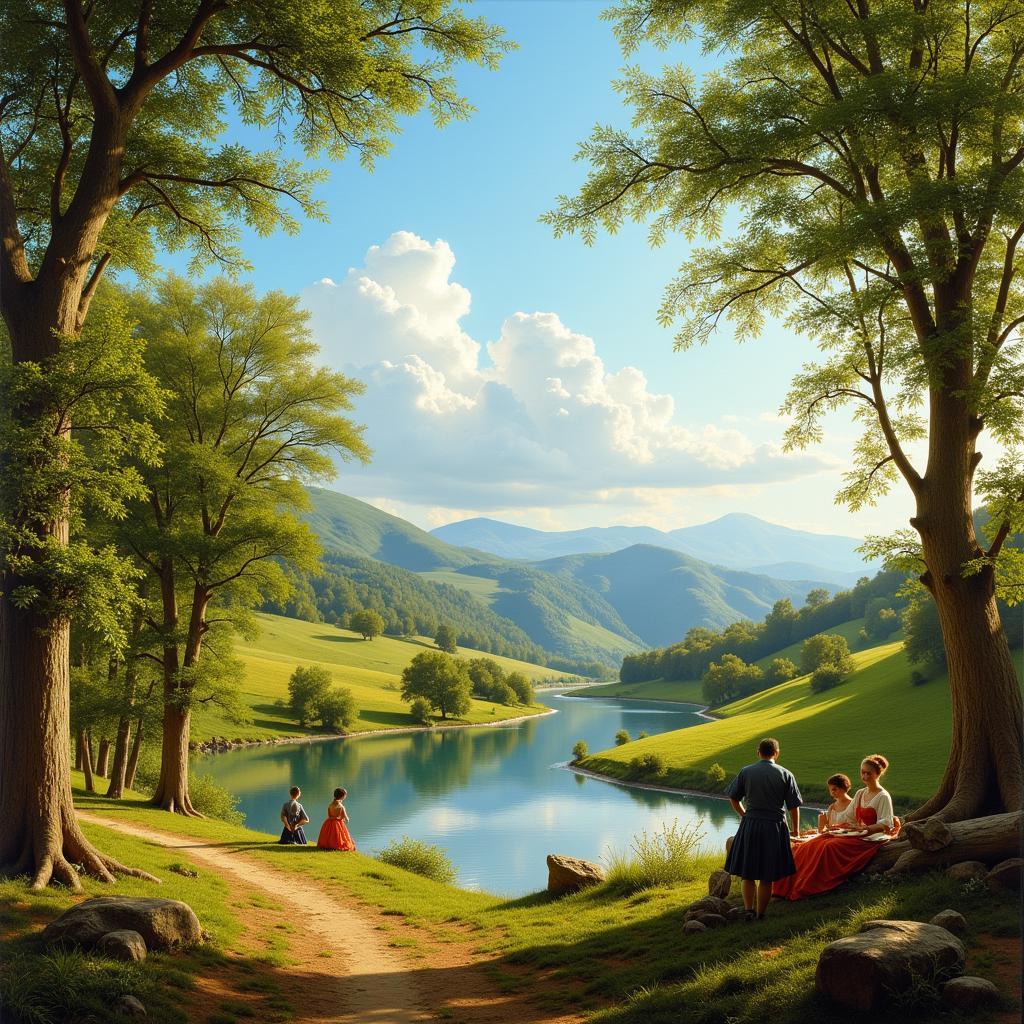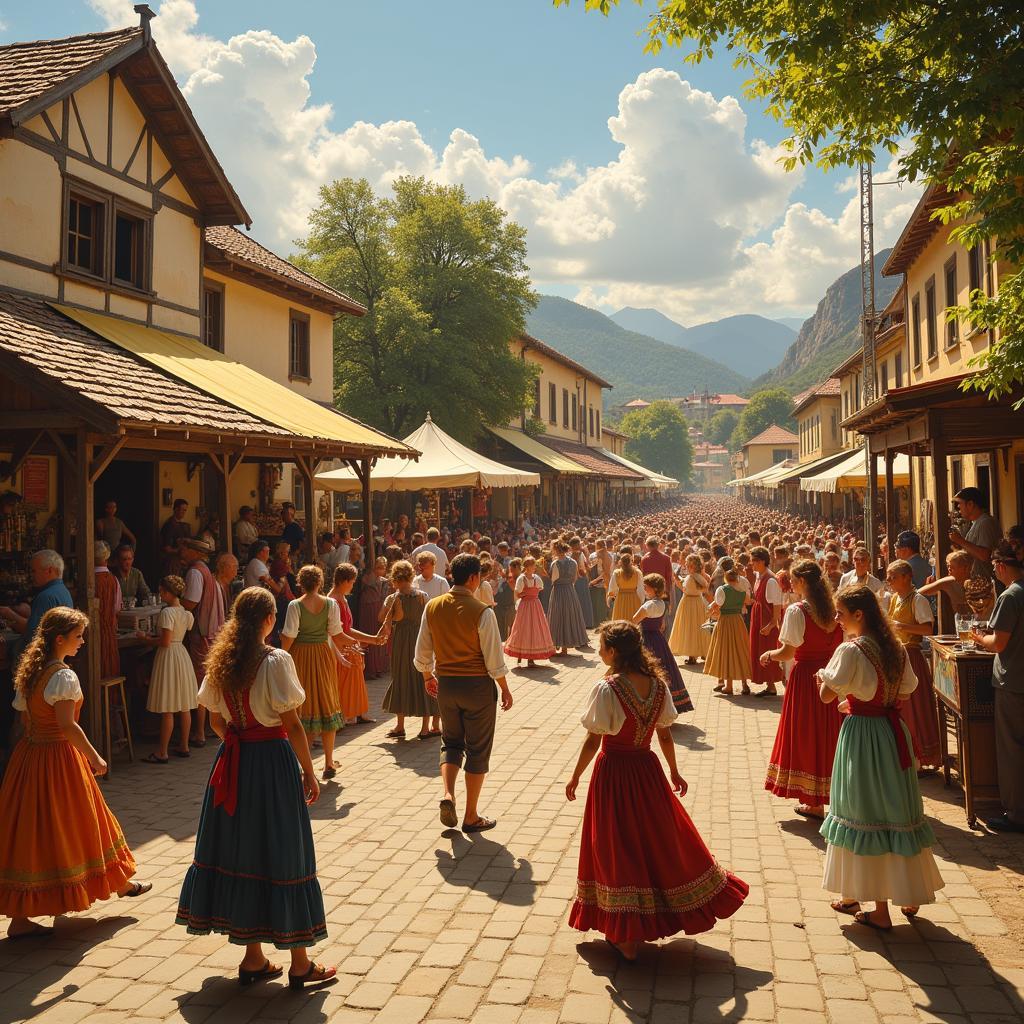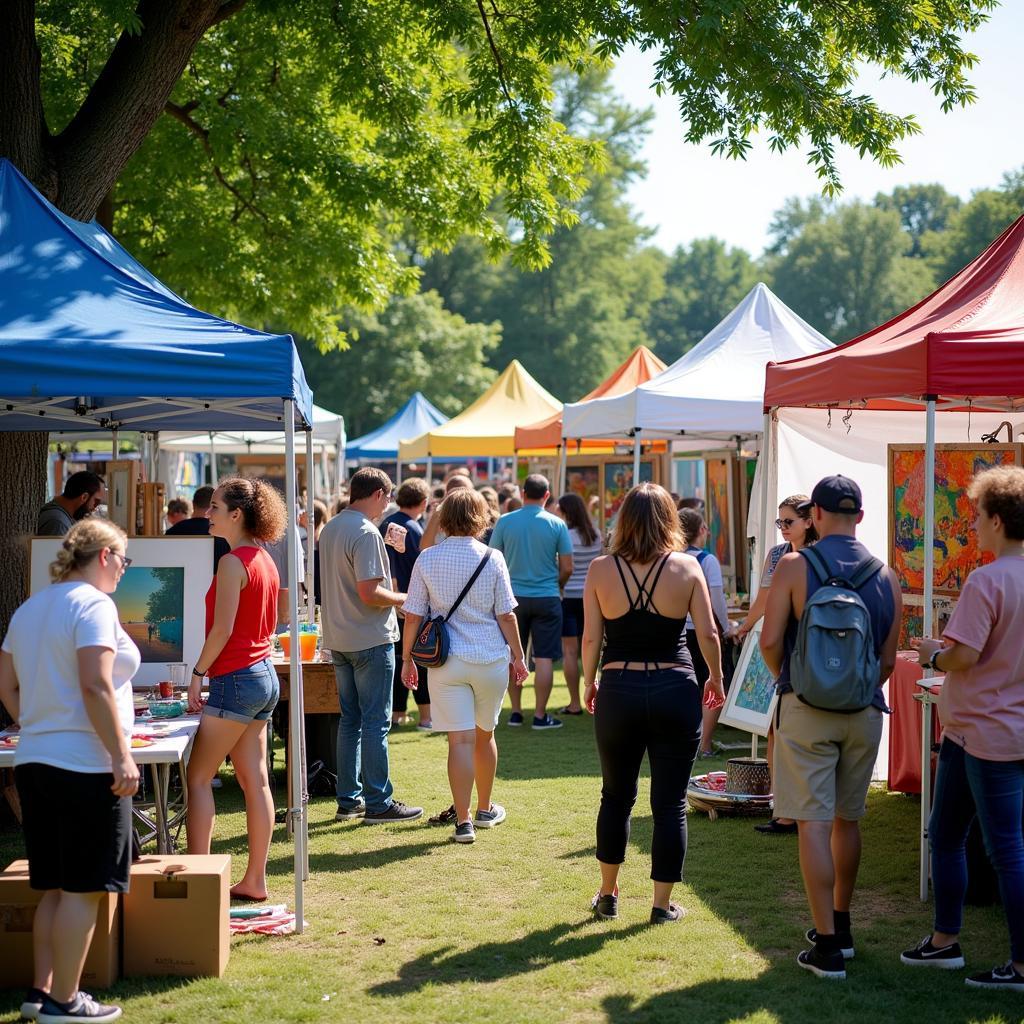Exploring the Beauty of Summer Classical Art
Summer Classical Art evokes a sense of timeless beauty, capturing the essence of warmth, light, and the natural world. From sun-drenched landscapes to evocative portraits, classical artists have long been inspired by the summer season. This exploration delves into the captivating world of summer-themed classical art, examining its recurring motifs, influential artists, and enduring appeal.
Classical art often reflects the societal values and cultural norms of its time. Let’s discover how summer, a season of abundance and leisure, has been interpreted through the lens of classical artists across different periods and styles. You’ll find that exploring summer classical art offers a unique window into the past, illuminating not just artistic techniques but also the social and historical context in which these masterpieces were created. We’ll even examine the impact of specific summer festivals on classical art. You can learn more about current summer arts festivals such as the Berkshires Arts Festival 2024.
The Allure of Summer Landscapes in Classical Art
Landscape painting holds a prominent place within classical art, and summer, with its vibrant colors and lush greenery, provided a rich source of inspiration. Many artists sought to capture the idyllic beauty of the countryside, portraying rolling hills, sparkling rivers, and sun-dappled forests. These landscapes often conveyed a sense of tranquility and harmony, reflecting the idealized view of nature prevalent in certain artistic movements.
What makes summer landscapes so appealing? Perhaps it’s the sense of warmth and light they evoke, or the feeling of freedom and escape they represent. Summer landscapes can transport us to a different time and place, offering a moment of respite from the everyday.
 Summer Classical Landscape Painting Depicting Rolling Hills and Lush Greenery
Summer Classical Landscape Painting Depicting Rolling Hills and Lush Greenery
Portraits and Figures in the Summer Sun
Classical artists didn’t limit themselves to landscapes when depicting summer. Portraits and figure studies also took on a distinctly summery character, often featuring individuals engaged in leisurely activities or dressed in light, flowing garments. These works captured the spirit of summer leisure and the relaxed atmosphere of the season. Think of scenes of picnics, boating parties, and garden strolls, all bathed in the warm glow of the summer sun.
These scenes offer a glimpse into the social lives and fashions of the past, providing valuable insights into the cultural context of the time. From the elegant attire of aristocratic ladies to the simple clothing of rural folk, these portrayals reveal much about the people and their world.
The Influence of Light and Color in Summer Classical Art
Light and color play a crucial role in capturing the essence of summer in classical art. Artists employed a range of techniques to depict the vibrant hues and shimmering light of the season, using bold brushstrokes and contrasting tones to create a sense of depth and luminosity. The interplay of light and shadow is particularly important in conveying the warmth and intensity of the summer sun.
 Summer Classical Portrait of a Lady in a Garden
Summer Classical Portrait of a Lady in a Garden
What were the specific techniques used by classical artists to achieve these effects? Different artistic movements had their own approaches to representing light and color, resulting in a diverse range of styles and interpretations. For example, Impressionist artists often used broken brushstrokes and vibrant colors to capture the fleeting effects of light, while Realist painters focused on depicting the world as it appeared to the naked eye.
Summer Festivals and Their Impact on Classical Art
Summer festivals and celebrations often found their way into classical art, providing artists with opportunities to depict lively scenes of communal gatherings and cultural traditions. These scenes offer a fascinating glimpse into the social and religious practices of the past. You might be interested in checking out the Springfield Summer Arts Festival 2024 lineup.
From harvest festivals to religious processions, these events provided a rich source of visual inspiration for artists. The costumes, music, and rituals associated with these celebrations were often depicted in vivid detail, offering a window into the cultural life of the time.
What Makes Summer Classical Art so Enduring?
Why does summer classical art continue to resonate with audiences today? Perhaps it’s the timeless themes of beauty, nature, and leisure that these works explore. Or maybe it’s the masterful use of light, color, and composition that captures our attention. Whatever the reason, summer classical art remains a source of inspiration and enjoyment for viewers of all ages.
 Summer Classical Festival Scene with Dancing and Music
Summer Classical Festival Scene with Dancing and Music
Summer classical art offers a captivating glimpse into a world of beauty and inspiration. From idyllic landscapes to lively festival scenes, these works capture the essence of summer in all its glory. By exploring the themes, techniques, and cultural contexts of summer classical art, we can gain a deeper appreciation for the enduring power of this artistic tradition. The enduring popularity of classical art is also evident in events like the Project Arts Free Summer Concert Series.
FAQ
- What defines “classical art” in the context of summer themes? Classical art generally refers to art from the ancient Greek and Roman periods, as well as art from the Renaissance and later periods that drew inspiration from these earlier traditions. In the context of summer, it encompasses works that reflect the aesthetics and values of these periods while depicting summer subjects.
- Are there specific artists known for their summer-themed classical works? While many artists have depicted summer scenes, some notable examples include Claude Lorrain, Pierre-Auguste Renoir, and John Constable.
- Where can I see examples of summer classical art? Many museums and art galleries around the world hold collections of classical art, including works with summer themes. Online resources also offer a wealth of images and information.
- How has summer been represented differently across various classical art periods? The portrayal of summer has evolved over time, reflecting changing artistic styles and cultural values. For example, the idealized landscapes of the Romantic period differ significantly from the more realistic depictions of the Baroque era. Learn more about food art on canvas.
- What are some common symbols associated with summer in classical art? Symbols of abundance, such as fruits and flowers, are often used to represent summer. Images of sunlight, water, and leisure activities are also common.
- How did the availability of pigments influence the depiction of summer colors in classical art? The development and availability of certain pigments had a direct impact on how artists could represent the vibrant colors of summer. For instance, the invention of certain blues and greens allowed for more realistic and vivid depictions of landscapes and skies.
- How did the changing understanding of perspective affect the representation of summer landscapes? The development of linear perspective in the Renaissance significantly changed how artists depicted space and depth in landscapes. This allowed for more realistic and believable portrayals of the vastness and detail of summer landscapes.
Other Questions you might be interested in
- How do I incorporate elements of classical art into my own summer photography?
- What are some good books on classical art and its connection to nature?
- Where can I find online resources to learn more about the history of summer art festivals?
- Are there any contemporary artists who draw inspiration from classical depictions of summer?
You can also learn more about outdoor art events like Arts in the Park Laporte schedule.
Contact Us
For any assistance, please contact us at Phone Number: 02462573573, Email: [email protected] or visit our address: Savico Megamall, 7-9 Đ. Nguyễn Văn Linh, Gia Thụy, Long Biên, Hà Nội 10000, Việt Nam. We have a 24/7 customer service team.


